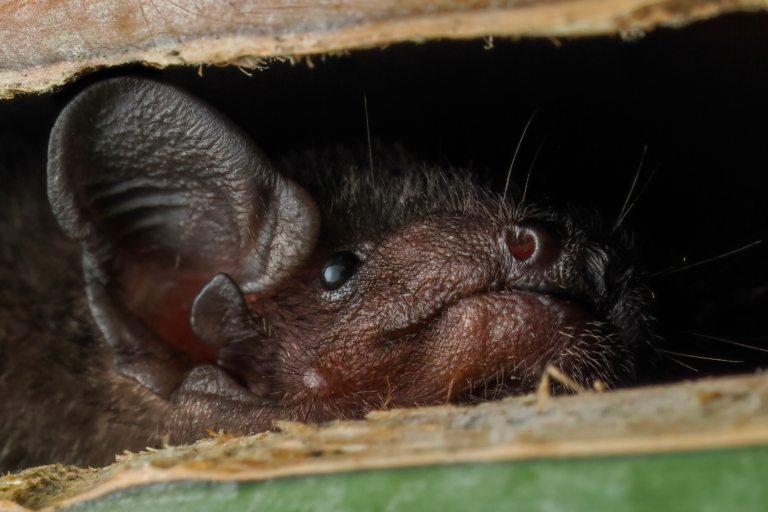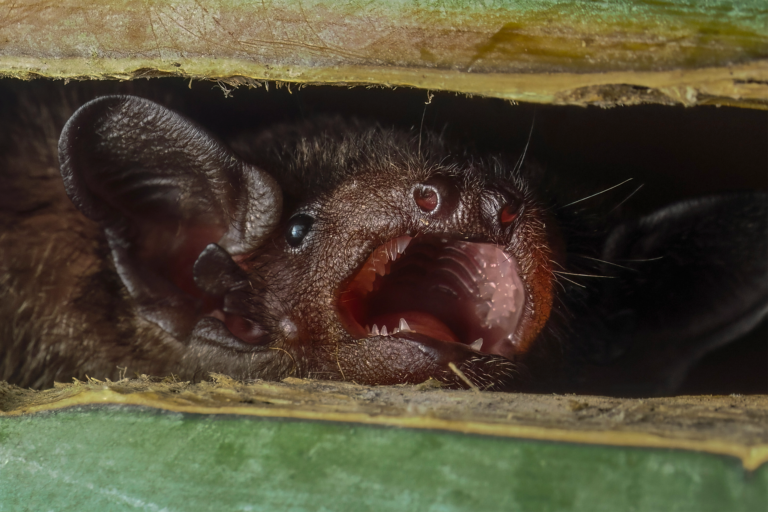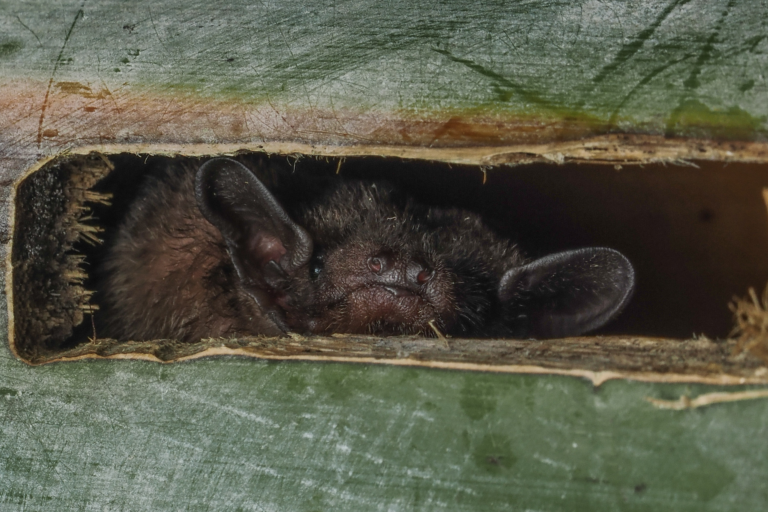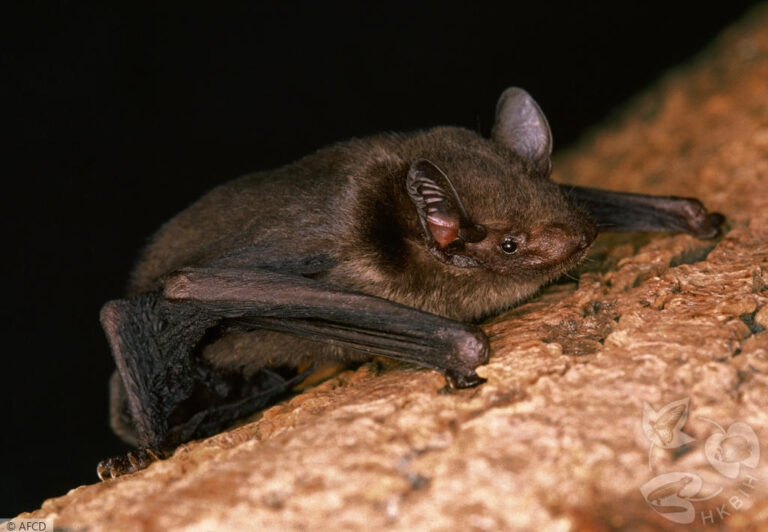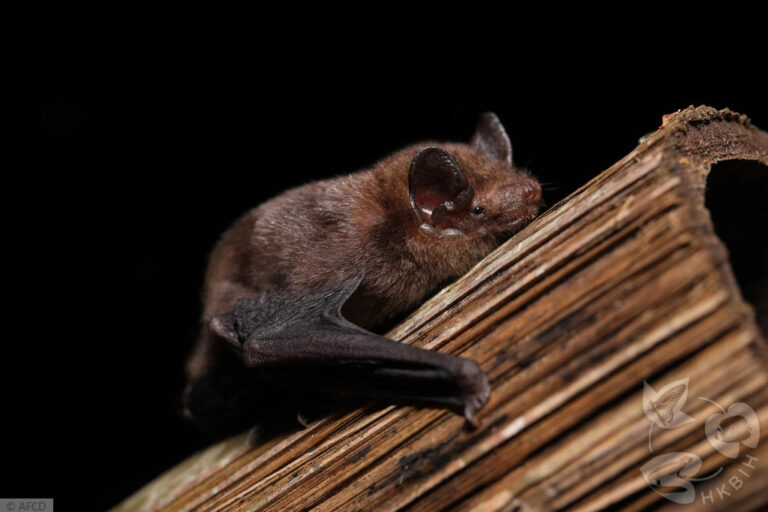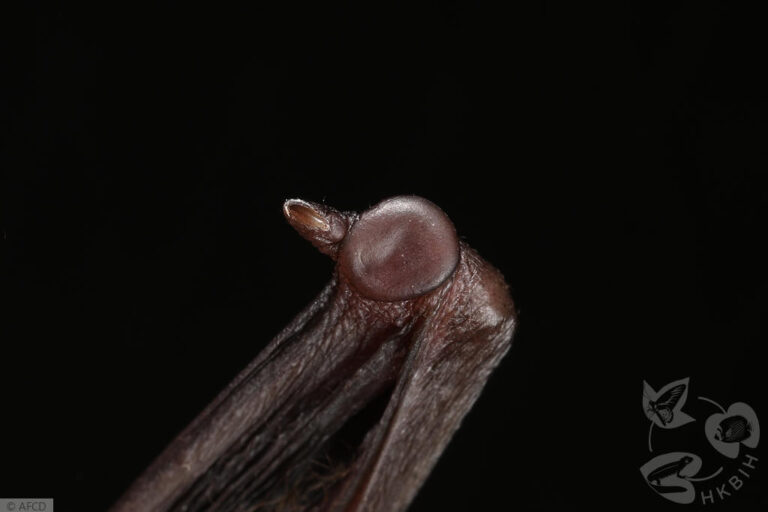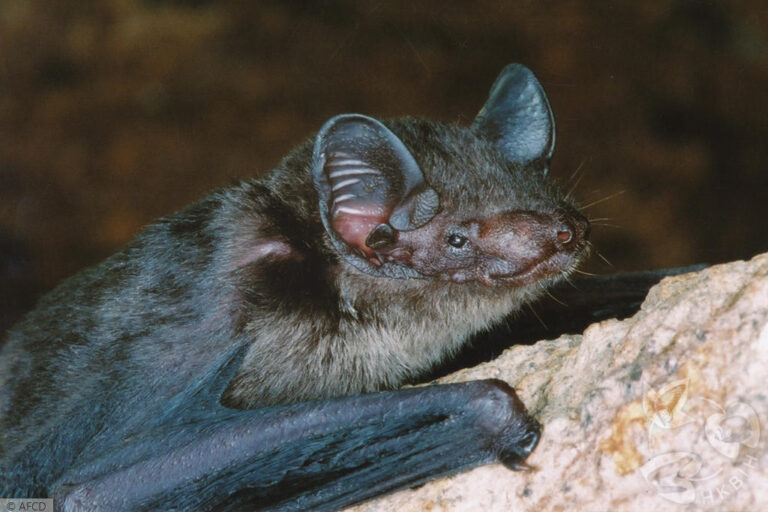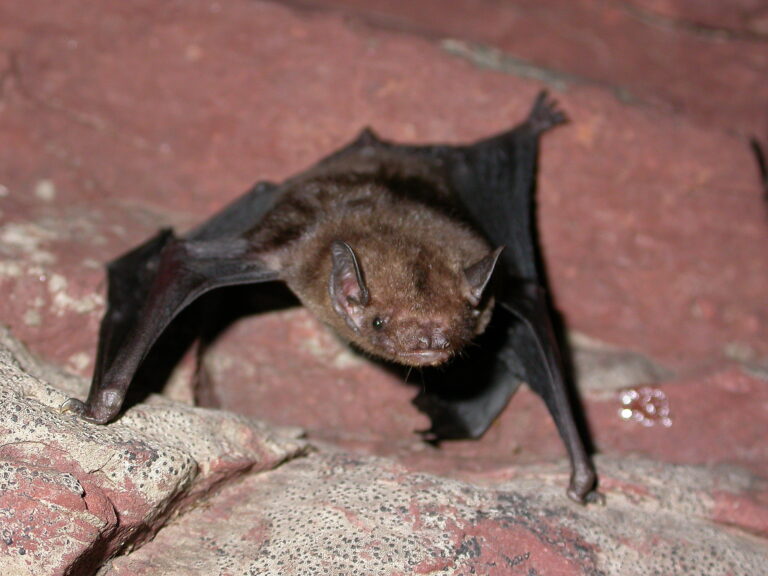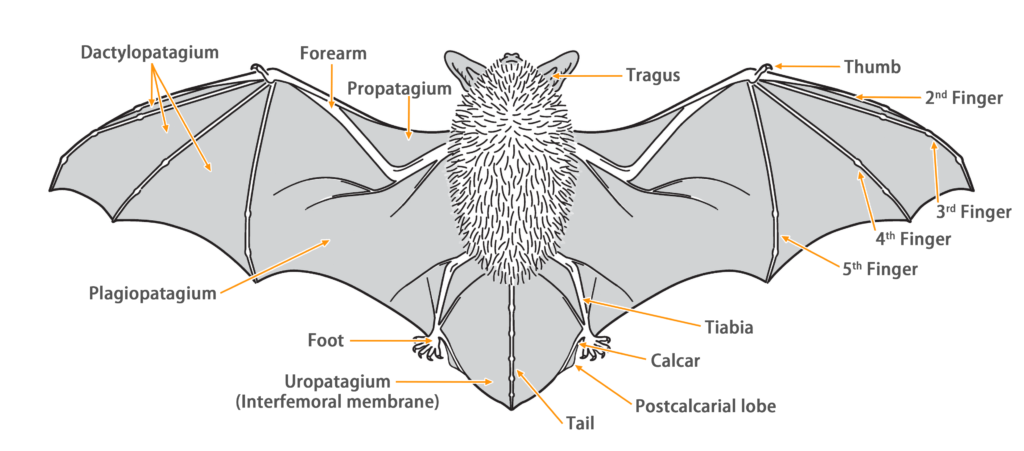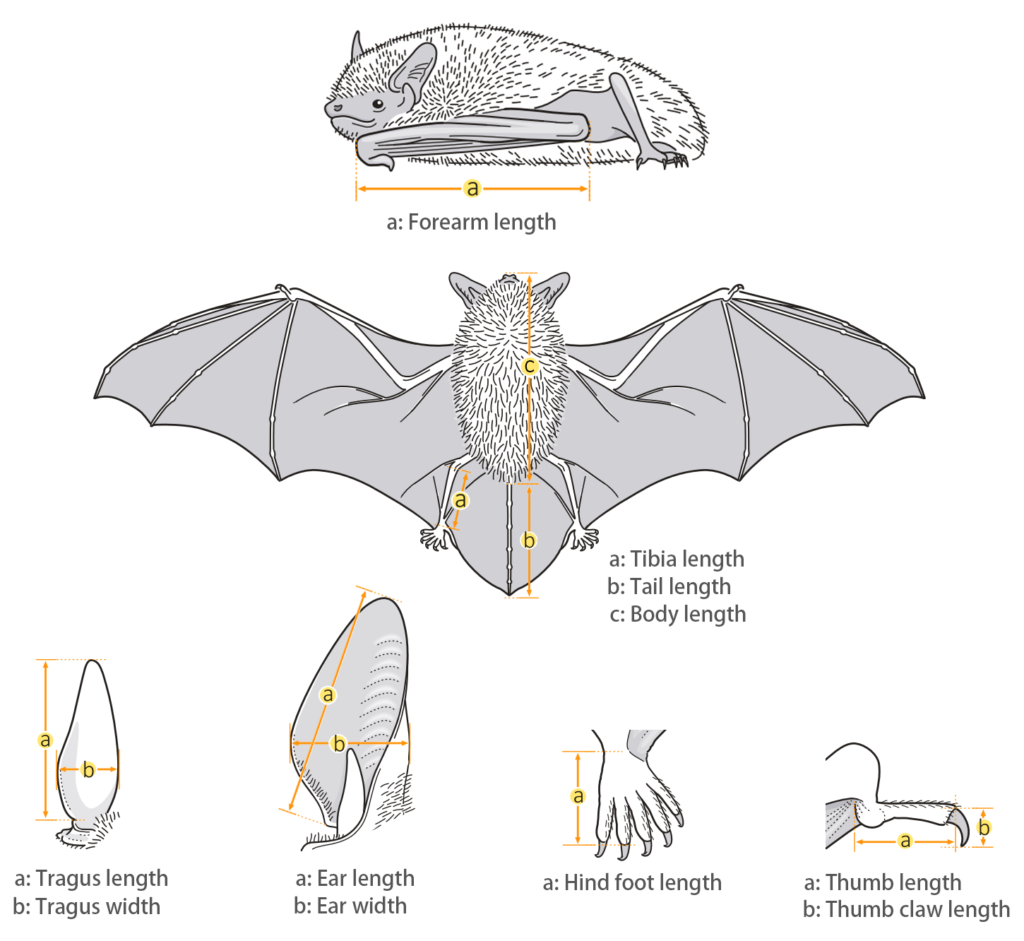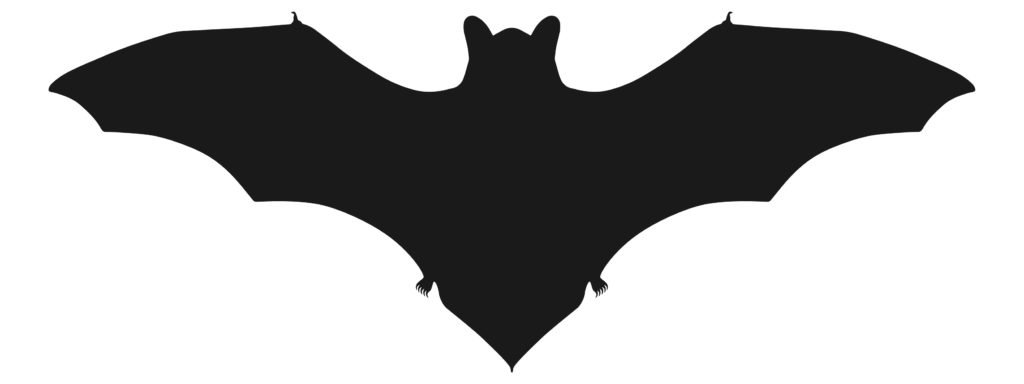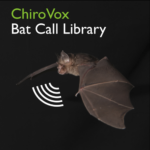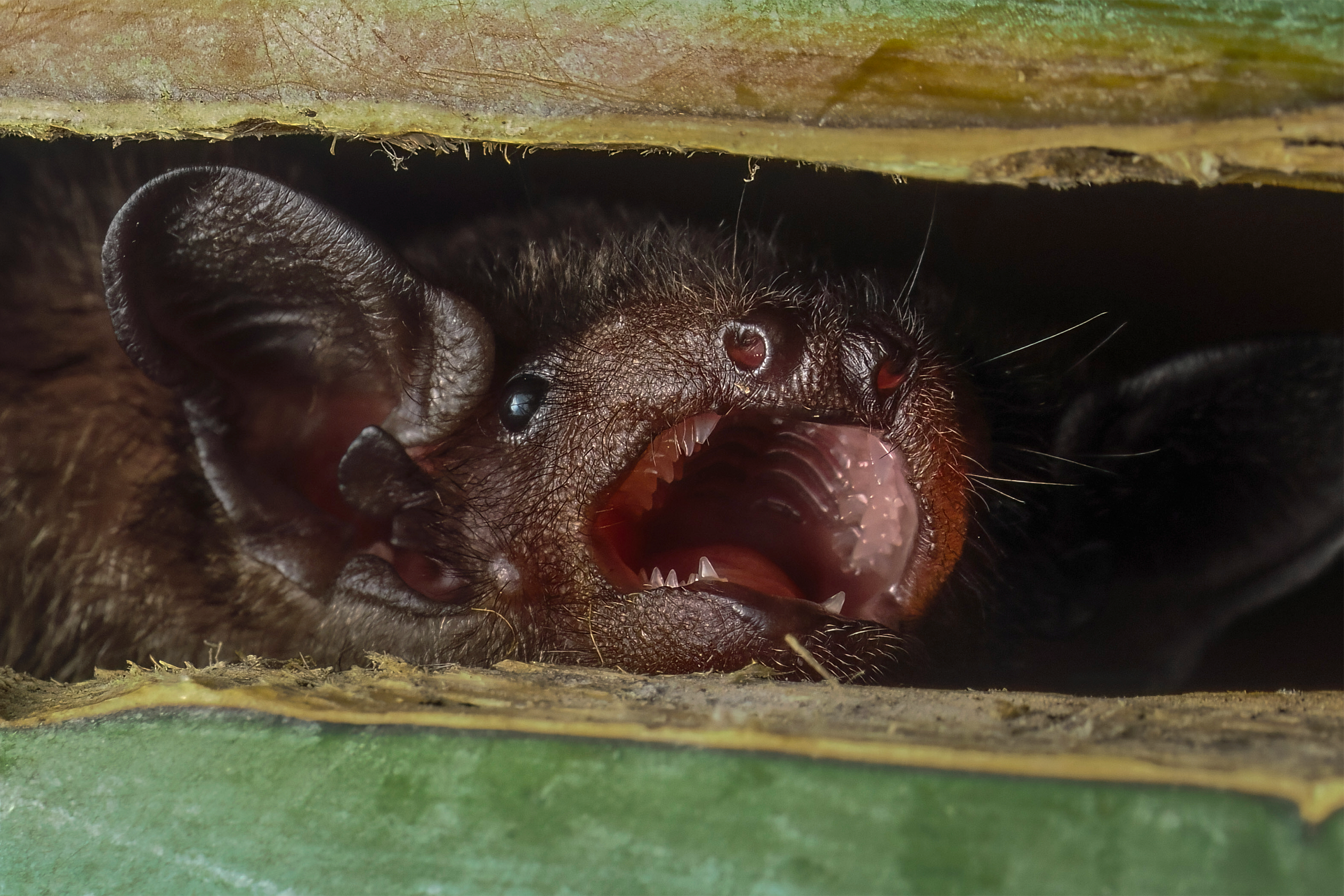- Hong Kong Bat Radar
- Tonkin Greater Bamboo Bat (Tylonycteris tonkinensis)
Tonkin Greater Bamboo bat
Tylonycteris tonkinensis Tu et al., 2017
Taxonomy
| Family: | Vespertilionidae |
| Genus: | Tylonycteris |
| Scientific name: | Tylonycteris tonkinensis Tu et al., 2017 |
| Synonyms: | - |
| Common name: | Tonkin Greater Bamboo Bat |
| Other name: | Greater Bamboo Bat, Tonkin Bamboo Bat |
| Remark: | T. tonkinensis is a newly described species in 2017. Its name refers to the historical place name "Tonkin," which corresponds to the Red River Delta region in present-day northern Vietnam. In 2017, Tu et al. conducted a taxonomic revision of the genus Tylonycteris, which is widely distributed in Southeast Asia, using molecular genetics and phylogeography. As a result, the population of T. robustula found in southeastern China was reclassified as T. tonkinensis .In 2021, Liang et al. conducted a molecular genetic study to re-examine the populations of "T. robustula" in the southern China. Their research further confirmed that only T. tonkinensis is present in the southeastern parts of China (Fujian, Jiangxi, Hong Kong, Guangdong, Hainan, Guangxi, Guizhou, Yunnan, and Sichuan). |
| Characteristics | |
| Color: | Pelage coloration is relatively variable and glossy. The dorsal fur varies from brown to dark brown (light brown at the base and dark brown at the tip); the ventral fur is relatively lighter. Juveniles generally have darker overall fur coloration. |
| Ear: | The ear pinna is subtriangular in shape, with a broadly rounded tip; the tragus is short and blunt, resembling a diamond shape, with a somewhat pointed apex; both the tragus and ear pinna are predominantly dark brown. |
| Head: | The head is small and flat. The snout is wide and short, with prominent lateral swellings; the whiskers surrounding the snout are black. |
| Limbs: | Base of thumbs and soles of hindfeet have well-developed and dark brown fleshy pads for gripping smooth surfaces. The pad is rounded for thumb and trapezoidal for feet. |
| Wings: | Wing membrane attaches at base of metatarsus. |
| Tail: | The tail is long, completely enveloped by the interfemoral membrane. The calcar is over halfway to tail from ankle and with narrow postcalcarial lobe. |
| Body measurements | |
| Size: | Small |
| Body: | 35.7 - 45.0 mm |
| Tail: | 19.3 - 34.0 mm |
| Ears: | 7.0 - 10.2 mm |
| Hind foot: | 4.3 - 6.6 mm |
| Forearm: | 24.3 - 29.0 mm |
| Weight: | 4.1 - 6.6 g |
| Wing morphology | |
| Wing span: | 0.196 m |
| Wing area: | 0.006 m2 |
| Wing loading: | 7.7 ± 1.2 N/m2 (Medium) |
| Aspect ratio: | 6.5 ± 0.3 (Medium) |
| Tip-shape index: | 1.32 ± 0.3 (Medium) |
| Reference: | Zhang et al., 2006 |
Ecology
| Habitat: | They exhibit strong adaptability and can inhabit various environments, including forests, rural areas, and urban settings. They typically inhabit the hollow cavities between joints of bamboo, hanging upside down with their foot pads positioned on the top of the bamboo nodes. Suitable bamboo species for their habitat in the local region include Bambusa sinospinosa and B. chungii and B. vulgaris 'Vittata' . |
| Habit: | They exhibit gregarious behavior, with colonies usually consisting of multiple adult female bats, juveniles, and a single adult male bat. However, solitary individuals or small groups of adult males can also be observed within colonies. While males tend to be solitary, females prefer to roost together. They frequently change their roosting sites within bamboo culms, and there is regular interchange of individuals between roosting groups. It has been documented that T. tonkinensis and T. pachypus can coexist within the same bamboo grove, typically roosting in different culms, although cohabitation within the same culm has also been observed (in Malaysia). |
| Reproduction: | Theire breeding season occurs from May to June each year, and they typically give birth to twins. Breeding colonies usually consist of one adult male bat, numerous adult female bats, and their offspring. The juveniles are capable of independent flight around 22-25 days after birth. |
| Hibernation: | They do not hibernate and remains active throughout the year. During periods of rapid temperature decline, it may enter a brief period of torpor. |
| Flight: | They have a relatively slow flying speed (4.8 m/s) and fair agility (not as good as T. pachypus ). They are capable of maneuvering through bamboo forests and complex environments. Their flight efficiency and hovering ability are relatively modest, making them more suitable for medium to short-distance flights. Their wingbeat frequency is relatively high, and they are accustomed to flying at higher altitudes, typically ranging from 4-8 m above the ground. |
| Foraging: | After sunset, both T. fulvida and T. tonkinensis are typically among the first bat species to become active in the local area. Once they leave their bamboo roosts, they tend to hover briefly near the bamboo grove before flying directly to their foraging locations, which can sometimes be far away from their roosts. They engage in slow to moderate-speed flight, hovering and foraging primarily in the canopy layer or above bodies of water. After approximately half an hour, most individuals return to their roosts. |
| Diet: | As insectivorous bats, they primarily feed on small flying insects while in flight. They particularly favor hunting insects from Hymenoptera (mainly Eulophidae and Diapriidae). The size of their prey is generally smaller compared to T. fulvida. There is small overlap of food-niche with T. fulvida but they have larger food-niche breadth and tend to feed on larger insects. |
Diet composition of T. tonkinensis in China (Guangxi) (Zhang et al., 2005)
Distribution
| Local: | Plover Cove Country Park (Shek & Chan, 2006), Hong Kong Island may have potential distribution (Tong, 2016) |
| Global: | Southeast China (Sichuan, Yunnan, Guizhou, Guangxi, and Hainan), North Vietnam, and Northeast Laos; it may extend into Myanmar, based on proximity of Chinese specimens to Myanmar border (Moratelli et al., 2019) |
Local distribution map
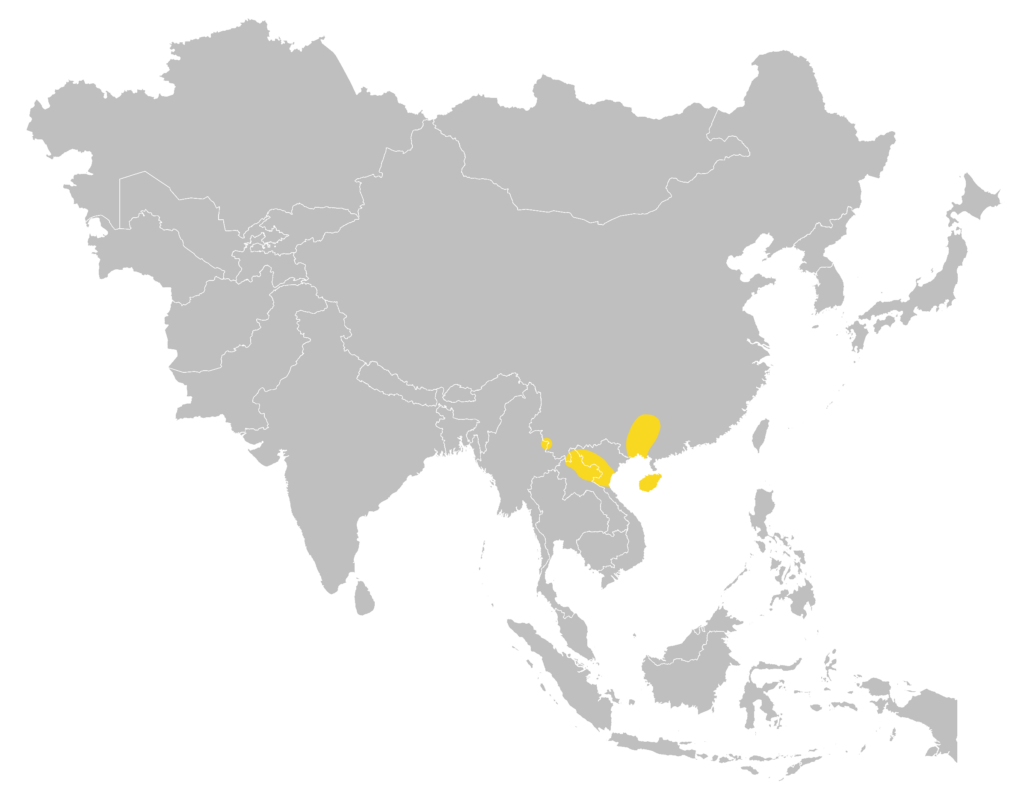
Global distribution map
(Moratelli et al., 2019)
Status and Conservation
| First record: | 2005 |
| Origin: | Native |
| Local status: | Rare (Shek & Chan, 2006) |
| National status: | Near threatened (Red List of China Vertebrates) |
| Global status: | Not evaluated (IUCN Red List) |
| Potential threat: | TBC |
Echolocation

| Parameter | Value |
|---|---|
| Call structure | FM |
| Duration | 3.90 ± 0.50 ms |
| Inter pulse interval | 61.30 ± 14.10 ms |
| Peak frequency | 57.7 ± 2.70 kHz |
| Highest frequency | 100.10 ± 6.80 kHz |
| Lowest frequency | 47.20 ± 2.00 kHz |
|
Region: |
China (Guangxi) |
| Method: | Hand release |
| Reference: | Zhang et al., 2006 |
Similar Species
Indiamalayan Bamboo Bat
Tylonycteris fulvida
Size:
Relatively smaller
Color:
Varied from golden yellow to brownish-yellow
Muzzle:
Golden yellow whiskers
Ears:
Ear pinna and tragus are brown, with a lighter base
Flight:
Prefer low-altitude flight
Bibliography
Hughes, A. C., Satasook, C., Bates, P. J. J., Soisook, P., Sritongchuay, T., Jones, G., & Bumrungsri, S. (2011). Using Echolocation Calls to Identify Thai Bat Species: Vespertilionidae, Emballonuridae, Nycteridae and Megadermatidae. Acta Chiropterologica, 13(2), 447-455.
Jiang, Z. G., Jiang, J. P., Wang, Y. Z., Zhang, E., Zhang, Y. Y., Li, L. L., Xie, F., Cai, B., Cao, L., Zheng, G. M., Dong, L., Zhang, Z. W., Ding, P., Luo, Z. H., Ding, C. Q., Ma, Z. J., Tang, S. H., Cao, W. X., Li, C. W., Hu, H. J., Ma, Y., Wu, Y., Wang, Y. X., Zhou, K. Y., Liu, S. Y., Chen, Y. Y., Li, J. T., Feng, Z. J., Wang, Y., Wang, B., Li, C., Song, X. L., Cai, L., Zang, C. X., Zeng, Y., Meng, Z. B., Fang, H. X., & Ping, X. G. (2016). Red List of China’s Vertebrates. Biodiversity Science 24(5), 500‑551.
Liang, X. L., Li, Y. N., Xie, H. X., Zhang, H. G., Zhan, L. Y., Wu, Y., Zhou, Q., & Yu, W. H. (2021). Study on Taxonomic Status of Tylonycteris tonkinensis from China. Chinese Journal of Wildlife, 42(4), 987-997.
Liu, S. Y., Wu, Y., & Li, S. (2022). Handbook of the mammals of China (3rd ed.). The Straits Publishing & Distribution Group.
Medway, L., & Marshall, A. G. (1970). Roost‐site selection among flat‐headed bats (Tylonycteris spp.). Journal of Zoology, 161(2), 237-245.
Moratelli, R., Burgin, C., Cláudio, V., Novaes, R., López-Baucells, A., & Haslauer, R. (2019). Vespertilionidae. In Mittermeier, R. A., & Wilson, D. E. (Eds.), Handbook of the Mammals of the World – Volume 9 Bats. (pp. 716-981). Lynx Edicions.
Shek, C. T. (2006). A Field Guide to the Terrestrial Mammals of Hong Kong. Friends of country park and cosmos book limited.
Shek, C. T., & Chan, C. S. M. (2006). Mist Net Survey of Bats with Three New Bat Species Records for Hong Kong. Hong Kong Biodiversity, 11, 1-7.
Tong, C. P. (2016). Distribution and preference of landscape features and foraging sites of insectivorous bats in Hong Kong urban parks. [Master’s thesis, The University of Hong Kong].
Tu, V. T., Csorba, G., Ruedi, M., Furey, N. M., Son, N. T., Thong, V. D., Bonillo, C., & Hassanin, A. (2017). Comparative phylogeography of bamboo bats of the genus Tylonycteris (Chiroptera, Vespertilionidae) in Southeast Asia. European Journal of Taxonomy, 274, 1-38.
Tu, V., Furey, N., Görföl, T., & Csorba, G. (2020). Tylonycteris robustula. The IUCN Red List of Threatened Species 2020: e.T22578A22086856.
Tu, V. T., Csorba, G., Ruedi, M., Furey, N. M., Son, N. T., Thong, V. D., Bonillo, C., & Hassanin, A. (2017). Comparative phylogeography of bamboo bats of the genus Tylonycteris (Chiroptera, Vespertilionidae) in Southeast Asia. European Journal of Taxonomy, 274, 1–38.
Thong, V. D., Denzinger, A., Sang, N. V., Huyen, N. T. T., Thanh, H. T., Loi, D. N., Nha, P. V., Viet, N. V., Tien, P. D., Tuanmu, M.-N., Huang, J. C.-C., Thongphachanh, L., Luong, N. T., & Schnitzler, H. U. (2021). Bat Diversity in Cat Ba Biosphere Reserve, Northeastern Vietnam, A Review with New Records from Mangrove Ecosystem. Diversity, 13(8), 376.
Wei, F. W., Yang, Q. S., Wu, Y., Jiang, X. L., Liu, S. Y., Li, B. G., Yang, G., Li, M., Zhou, J., Li, S., Zhou, J., Li, S., Hu, Y. B., Ge, D. Y., Li, S., Yu, W. H., Chen, B. Y., Zhang, Z. J., Zhou, C. Q., Wu, S. B., Zhang, L., Chen Z. Z., Chen, S. D., Deng, H. Q., Jiang, T. L., Zhang, L. B., Shi, H. Y., Lu, X. L., Li, Q., Liu, Z., Cui, Y. Q., & Li, Y. C. (2021). Catalogue of mammals in China (2021). Acta Theriologica Sinica, 41(5), 487–501.
Zhang, L. B., Lu, L. R., Zhou, S. Y., Zhao, H. H., Lou, G. H., & Zhang, S. Y. (2002). Comparison of the echolocation signals in two species of flat-headed bats at flying. Zoological Research, 23(4), 296-300.
Zhang, L. B., Liang, B., Zhou, S. Y., LU, L. R., & Zhang, S. Y. (2004). Group structure of lesser flat-headed bat Tylonycteris pachypus and greater flat-headed bat T. robustula. Acta Zoological Sinica, 50(3), 326–333.
Zhang, L. B., Jones, G., Rossiter, S., Ades, G., Liang, B., & Zhang, S. Y. (2005). Diet of flat-headedbats, Tylonycteris pachypus and T. robustula, in Guangxi, South China. Journal of Mammalogy, 86(1), 61–66.
Zhang, L. B., Liang, B., Parsons, S., Wei, L., & Zhang, S. (2006). Morphology, echolocation and foraging behaviour in two sympatric sibling species of bat (Tylonycteris pachypus and Tylonycteris robustula)(chiroptera: vespertilionidae). Journal of zoology, 271(3), 344-351.
Hong Kong Bat Radar. (01/05/2024). A Field Guide to Bats of Hong Kong: Tonkin Greater Bamboo bat (Tylonycteris tonkinensis ). https://hkbatradar.com/en/tylonycteris_tonkinensis
